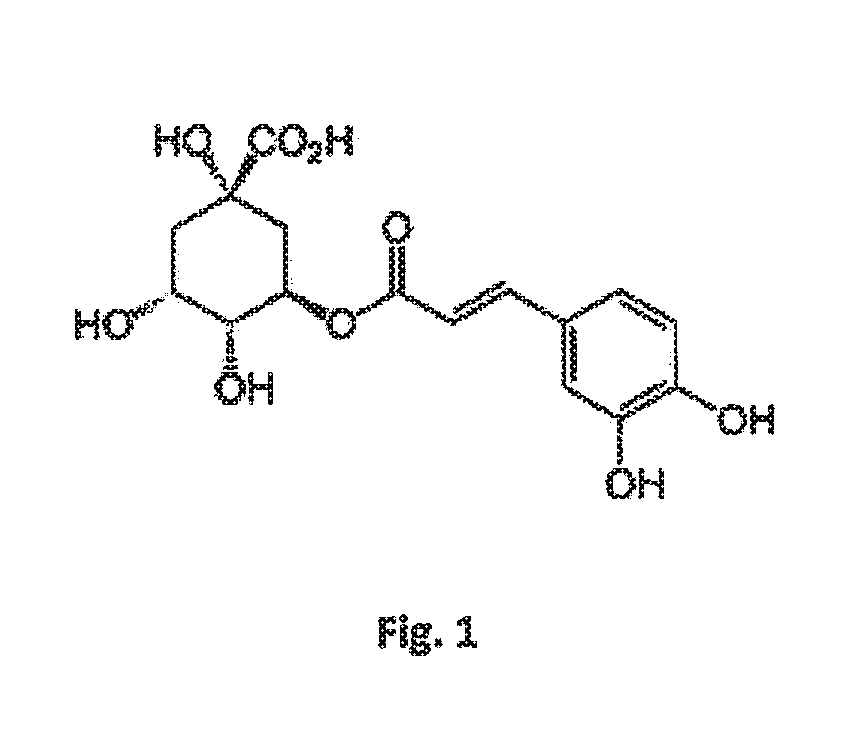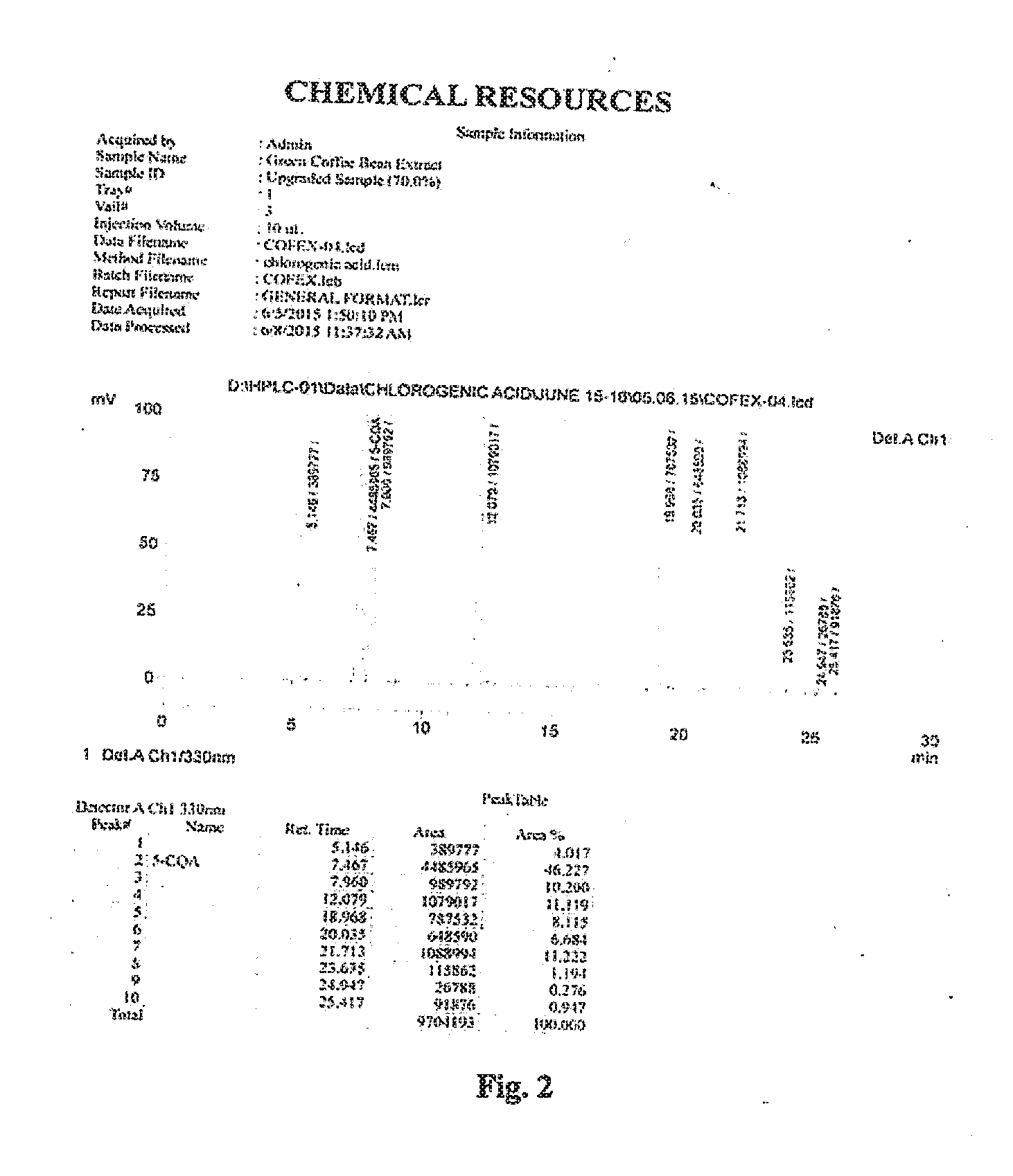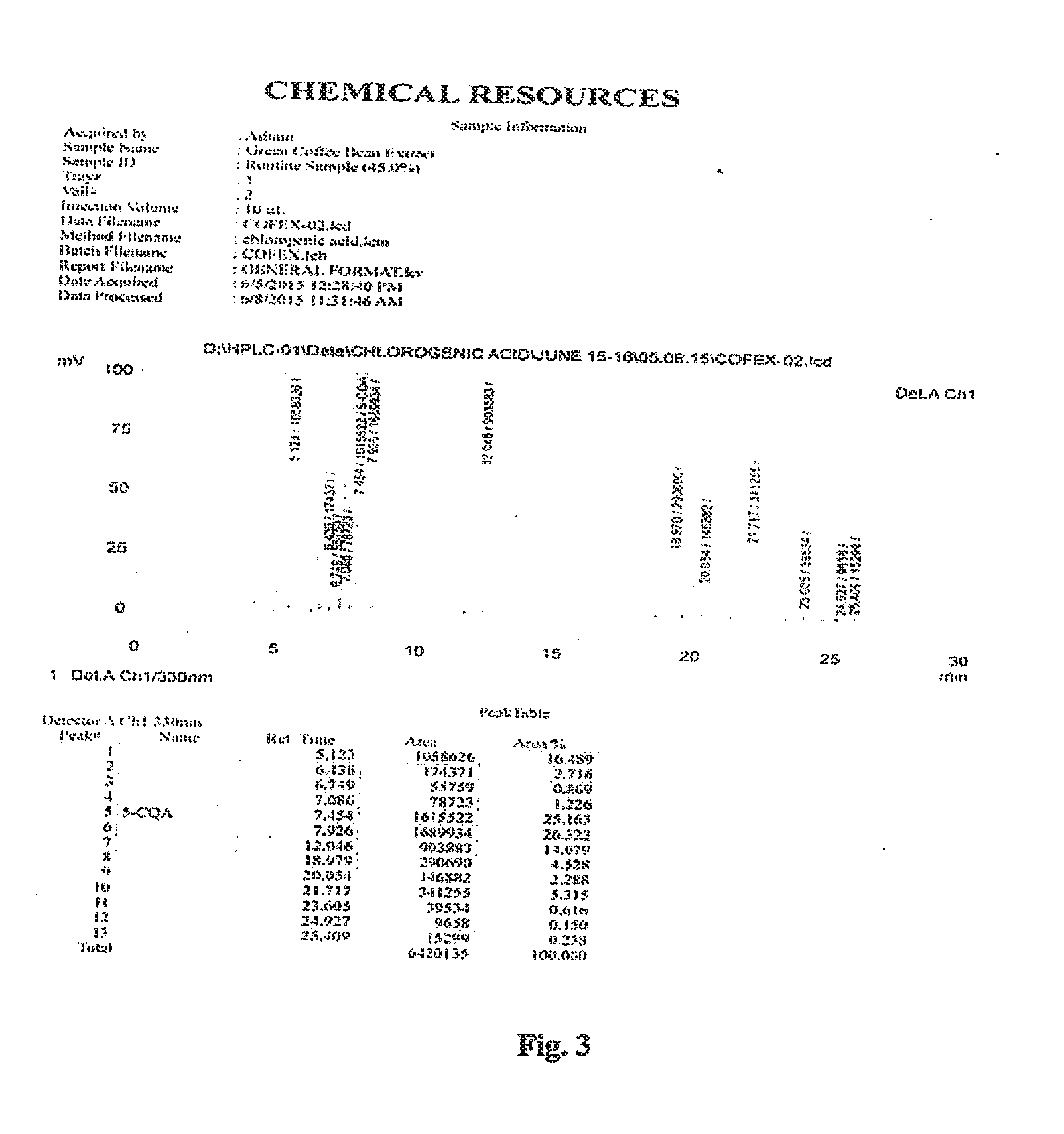Green coffee bean extract and method thereof
a technology of green coffee bean and extract, which is applied in the field of phytochemistry (plant chemistry), can solve the problems of significant reduction of body mass and body fat, significant loss of beneficial compounds, and significant degradation of chlorogenic acids in roasting process, and achieves the effect of more bioavailable and beneficial for health
- Summary
- Abstract
- Description
- Claims
- Application Information
AI Technical Summary
Benefits of technology
Problems solved by technology
Method used
Image
Examples
example 1
Extraction without Use of Alcohols
[0074]In this method, no alcohol is used at all in the extraction. Rather a water immiscible solvent i.e. ethyl acetate is used in the first stage itself to carry out extraction of the Chlorogenic acids. Thereafter, the extract is purified by using solvents to remove fats and caffeine. The process thus uses only three solvents in the entire process are thus water, ethyl acetate and chlorinated solvents (chloroform, methylene chloride for removal of caffeine).
Extraction:
[0075]Powdered coffee beans (1 Kg or 1000 grams) are charged in a 5.0 liter flask fitted with a stirrer. 2 liter acidic water is added at 40-50° C. and gradually increased to 45-55° C. with constant stirring for 4 hours. Thereafter, 4 times the water quantity i.e. 4 liter of ethyl acetate is added and stirring is carried out at slightly elevated temperature of 50-55° C. Water and solvent mixture is filtered and the powder is transferred back to the flask. Steps of extraction with wate...
examples 2 to 4
Extraction with Use of Alcohols
[0078]High yield can also be obtained using a combination of steps involving a hydro-alcoholic mixture and a water immiscible / miscible less polar solvent at different stages of extraction and purification respectively. Water-alcohol mixture is used for extraction. Purification is carried out by washing the extract with hexane (to remove fats) and chlorinated solvents e.g. chloroform, methylene chloride etc. (to remove caffeine). In final step of purification, water immiscible / miscible polar solvents whose polarity is less than that of methanol or ethanol i.e. n-butyl alcohol, acetone or ethyl acetate are used. This results in an extract having high Chlorogenic acid content of 70-80%.
example 2
Extraction Using Water-Alcohol Mixture and n-Butyl Alcohol
Extraction:
[0079]Powdered coffee beans (1 Kg or 1000 grams) are charged in a 5.0 liter flask fitted with a stirrer. Water-alcohol (methanol) mixture 4 times the quantity of bean powder i.e. 4 liters, is added at 40-50° C. and gradually increased to 45-55° C. with constant stirring for 4 hours. Water and alcohol mixture is filtered and the powder is transferred back to the flask. Steps of extraction with water and alcohol are repeated 2-3 times, till the herb is completely exhausted. The polar compounds thus get extracted into the hydro-alcoholic mixture. The mixture is then concentrated by vacuum and volume reduced to 800-1000 ml inside the vessel.
Purification:
[0080]Defatting of the aqueous layer is carried out by washing the aqueous layer obtained with 500 ml each of hexane, twice. After removal of fats, aqueous layer is washed with chlorinated solvent e.g. Chloroform, Methylene chloride etc. thrice with 600 ml each, to remo...
PUM
 Login to View More
Login to View More Abstract
Description
Claims
Application Information
 Login to View More
Login to View More - R&D
- Intellectual Property
- Life Sciences
- Materials
- Tech Scout
- Unparalleled Data Quality
- Higher Quality Content
- 60% Fewer Hallucinations
Browse by: Latest US Patents, China's latest patents, Technical Efficacy Thesaurus, Application Domain, Technology Topic, Popular Technical Reports.
© 2025 PatSnap. All rights reserved.Legal|Privacy policy|Modern Slavery Act Transparency Statement|Sitemap|About US| Contact US: help@patsnap.com



